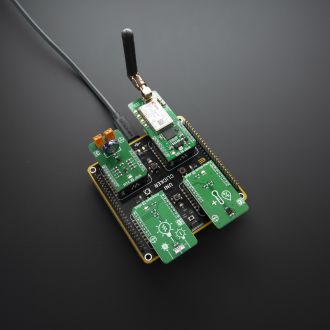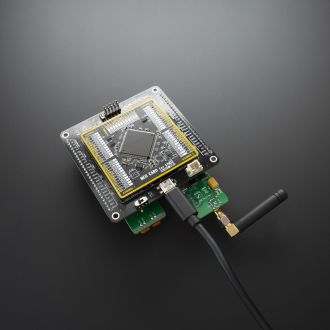
We strongly encourage users to use Package manager for sharing their code on Libstock website, because it boosts your efficiency and leaves the end user with no room for error. [more info]

Rating:
Author: MIKROE
Last Updated: 2020-03-20
Package Version: 1.0.0.0
Category: Sensors
Downloaded: 126 times
Not followed.
License: MIT license
What is the weather going to be like today? That’s the first question everyone asks in the morning.
With this innovative project you can measure temperature and humidity in real time!
You can even access this data remotely via the G2C 3G Click, a reliable connection to the Click Cloud platform, a cloud-based rapid prototyping environment.
Do you want to subscribe in order to receive notifications regarding "Remote Weather Station with ClickCloud - GSM platform" changes.
Do you want to unsubscribe in order to stop receiving notifications regarding "Remote Weather Station with ClickCloud - GSM platform" changes.
Do you want to report abuse regarding "Remote Weather Station with ClickCloud - GSM platform".
| DOWNLOAD LINK | RELATED COMPILER | CONTAINS |
|---|---|---|
| 1584696701_remote_weather_s_mikroc_arm.zip [42.63KB] | mikroC PRO for ARM |
|


Project Description
With this project you can create your very own personalized weather station that can be implemented in your home, a greenhouse or in any other industrial control unit which depends on weather conditions.
This showcase was developed using several Mikroe Click boards™: the Temp-Hum 8 Click, the Ambient 6 Click, and the RTC 7 Click. The project is hosted on our UNI CLICKER.
The temperature and humidity are measured with our Temp-Hum 8 Click, which can also be used for other weather related applications such as thermostats and microenvironment centers, while the ambient illumination data is gathered with our Ambient 6 Click, which is ideal for various applications that rely on light intensity sensing.
The RTC 7 Click measures the exact real time in which a weather change has occurred. This is very important because you can actually know what causes changes and exactly when they happen in order to receive even more information regarding the project. Because of the RTC 7 Click, the data will be checked every second and the results will be updated on every weather change.
To make sure all of the gathered information is safely stored and can be accessed remotely, you can add our G2C 3G (Go to Cloud - GSM) Click - a simple and reliable connection to the Click Cloud platform, a cloud-based rapid prototyping environment, where you can monitor the data remotely.